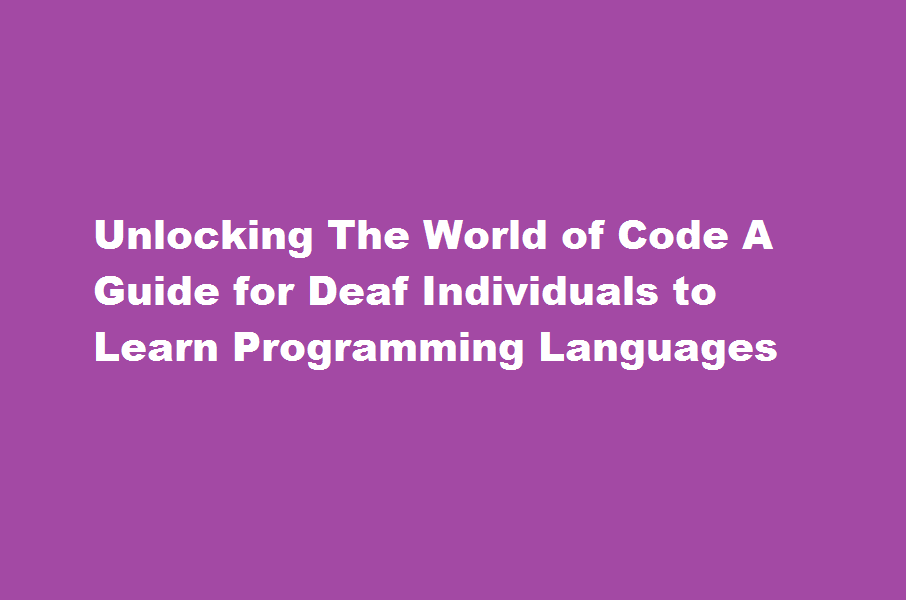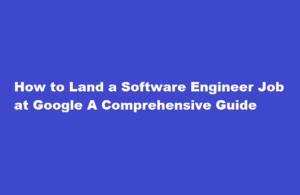Unlocking The World of Code A Guide for Deaf Individuals to Learn Programming Languages
3 min read
Introduction
Learning to code is a powerful skill that opens up a world of opportunities. However, traditional resources for learning programming languages often rely heavily on auditory cues, making it challenging for deaf individuals to access these educational materials effectively. In this article, we will explore unique strategies and resources that empower deaf individuals to learn code languages successfully. By embracing visual and interactive learning methods, deaf programmers can thrive in the digital world and contribute their talents to the ever-expanding field of technology.
Visual Learning
Visual learning is a key approach for deaf individuals to grasp programming concepts efficiently. Online platforms like Codecademy, Udemy, and Coursera offer video tutorials with subtitles, allowing learners to follow along with visual cues. Utilising these resources, deaf individuals can absorb programming syntax, data structures, and algorithms at their own pace. Additionally, many programming languages have visual programming environments, such as Scratch or Blockly, which enable users to learn and practice coding through drag-and-drop blocks. These visual representations make it easier for deaf learners to understand the logic and flow of code.
Sign Language Resources
Sign language can play a vital role in learning programming languages for the deaf community. By creating specialised sign language glossaries for coding terminology, deaf individuals can easily communicate and understand technical terms. Collaborative efforts can be made to develop a standardised sign language vocabulary specifically tailored to coding concepts. Additionally, video tutorials and online courses featuring sign language interpreters can bridge the gap between deaf individuals and programming instructors, making the learning process more inclusive.
Interactive Learning Tools
Interactive learning tools offer engaging experiences that promote hands-on learning for deaf individuals. Online coding platforms like Scratch, Khan Academy, and FreeCodeCamp provide interactive coding challenges and projects, which encourage experimentation and reinforce programming skills. These platforms also feature active user communities where learners can interact, seek help, and share their progress. Joining coding bootcamps or workshops designed for deaf individuals can provide immersive learning experiences and foster connections with peers who face similar challenges.
Community and Mentorship
Building a supportive community and seeking mentorship are essential for deaf individuals learning to code. Engaging with deaf-centric coding groups, online forums, and social media communities can offer opportunities for collaboration, knowledge sharing, and support. Mentorship programs specifically tailored for deaf individuals can connect learners with experienced programmers who can provide guidance, answer questions, and share their industry expertise. Peer-to-peer mentoring can also be encouraged, where deaf programmers support and inspire each other, leading to a stronger and more inclusive coding community.
Frequently Asked Questions
How do deaf people learn languages?
Deaf people learn a language using a variety of methods. There’s no universal method, but many deaf persons learn to understand the people around them by reading body signals, lip reading, and using American Sign Language or Manually Coded English.
What is the most accessible language for deaf people?
Many of them have great difficulty with written languages and, therefore, communication in ASL provides freedom and autonomy in their daily lives. With accessibility in ASL, they can receive in their mother language all the information that is being transmitted in English.
Conclusion
Learning programming languages should be accessible to everyone, regardless of hearing ability. By leveraging visual learning methods, utilising sign language resources, engaging with interactive learning tools, and fostering community and mentorship, deaf individuals can break down barriers and excel in the world of coding. The growth of inclusive coding education platforms and initiatives will play a pivotal role in empowering deaf programmers to unleash their creativity and contribute to the advancement of technology. Together, we can create a more inclusive and diverse coding community where talent knows no boundaries.
Read Also : Discover The Path to Sustainable Weight Loss Without Dieting





